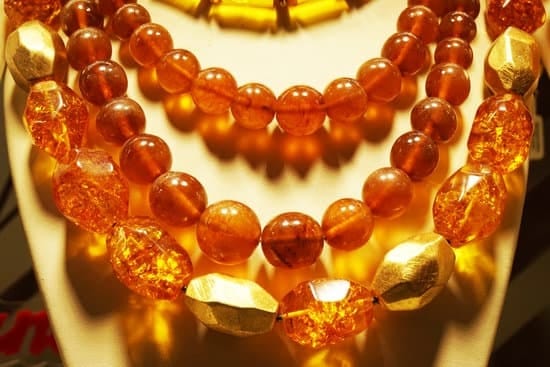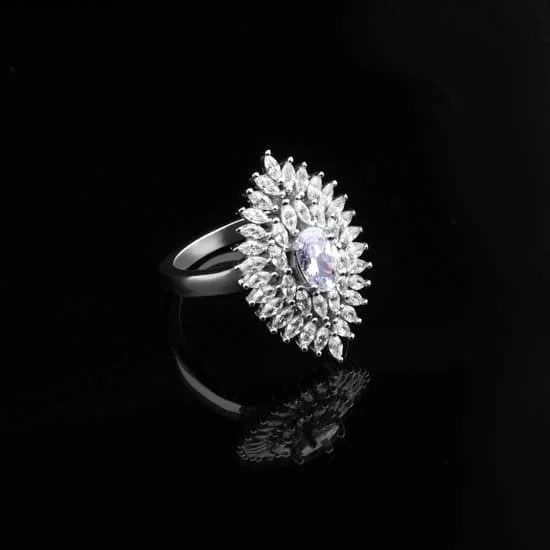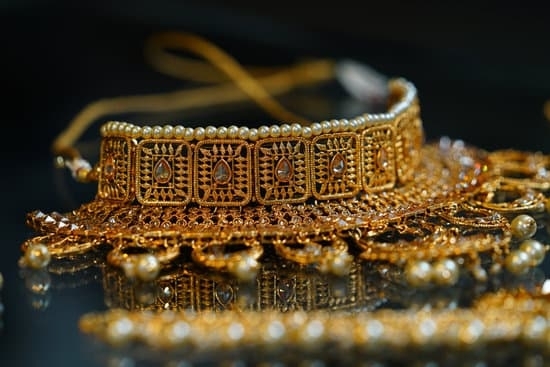African beaded jewelry history offers a fascinating insight into the rich cultural tradition of the continent. The intricate designs and vibrant colors of African beads have been a significant part of indigenous cultures for centuries, symbolizing various aspects of life, spirituality, and community. From ceremonial adornments to everyday wear, beads hold a special place in African heritage.
Tracing back to ancient times, the origins of African beaded jewelry showcase the craftsmanship and artistry of its creators. Each bead holds symbolic meaning, representing stories, beliefs, and traditions passed down through generations. The evolution of African beaded jewelry from traditional to contemporary styles reflects both cultural preservation and adaptation to modern trends.
The significance of beads in African culture goes beyond mere ornamentation; they serve as markers of identity, status, and spirituality. Techniques used in creating African beaded jewelry are intricate skills that have been honed over centuries and are often passed down within families or communities. This article delves into the diverse types of beads used in African jewelry-making, regional variations in styles across different countries, and the influence of this art form on global fashion trends.
Origins of African Beaded Jewelry
African beaded jewelry has a rich history that dates back to ancient times, reflecting the diverse cultural traditions of the continent. The art of beadwork holds deep significance in African culture, with each design and pattern carrying symbolic meaning. The use of beads in jewelry-making has been a longstanding tradition across various African regions, serving as a form of adornment, communication, and protection.
The origins of African beaded jewelry can be traced back to early civilizations where beads were crafted from materials such as glass, clay, metal, shells, or even seeds. These beads were used not only for personal adornment but also for religious rituals and ceremonies.
In many African societies, beadwork was considered a valuable form of currency and a symbol of wealth and status. The intricate skills involved in creating these pieces were passed down through generations, with each design reflecting the unique cultural identity of different tribes and communities.
Throughout history, African beaded jewelry has evolved from traditional styles to more contemporary designs. While some regions have preserved their ancestral techniques and patterns, others have incorporated modern elements to appeal to a wider audience. The beauty of African beaded jewelry lies in its ability to blend age-old traditions with innovative creativity, showcasing the enduring legacy of craftsmanship and cultural heritage within the vibrant continent.
Significance of Beads in African Culture
Beads hold a special place in African culture, with each design carrying its own unique symbolism and meaning. In African societies, beads have been used for centuries as a form of communication, representing social status, ethnicity, religion, or even marital status. The use of beads in jewelry-making goes beyond mere decoration; it serves as a way for individuals to express their identity and heritage through intricate designs and colors.
Symbolism of Colors
In African beaded jewelry, the choice of colors is not arbitrary but holds significant meaning. For example, red beads may symbolize power and vitality, while blue beads could represent peace and harmony. White beads often signify purity and spirituality, while black beads are commonly associated with protection and strength. By understanding the symbolism behind each color used in African beaded jewelry, one can gain insight into the deeper cultural significance of these adornments.
Social Significance
Beyond the aesthetic appeal, beads in African culture also play a crucial role in social interactions. Beadwork is often used to convey messages or establish connections within communities. For instance, certain bead patterns may indicate a person’s tribe or clan affiliation, facilitating recognition and solidarity among group members. Additionally, exchanging beaded jewelry can serve as a gesture of friendship or goodwill, strengthening interpersonal relationships within African societies.
Ritualistic Meaning
In many African traditions, beaded jewelry is deeply intertwined with spiritual beliefs and rituals. Beads are believed to possess protective qualities or magical properties that ward off evil spirits or bring good fortune to the wearer.
During ceremonies such as weddings, initiation rites, or ancestral gatherings, specific bead designs may be worn to invoke blessings or commemorate important milestones in one’s life. The ritualistic use of beads underscores their sacred significance in African cultures and highlights the enduring legacy of African beaded jewelry history.
Evolution of African Beaded Jewelry
African beaded jewelry has a rich history that spans back to ancient times, showcasing the creativity and artistry of the diverse cultures on the continent. The evolution of African beaded jewelry from traditional to contemporary styles reflects not only changes in fashion trends but also the innovative ways in which artisans incorporate cultural heritage into modern designs. Traditional African beadwork was often characterized by intricate patterns and vibrant colors, each design holding significance and symbolism within the community.
As African societies evolved over time, so did their jewelry-making techniques. While traditional methods are still practiced today, contemporary African beaded jewelry incorporates modern elements such as new materials, patterns, and styles. This fusion of tradition and innovation allows for the preservation of cultural heritage while also appealing to a wider audience around the world. The artistry behind African beaded jewelry continues to inspire designers globally, influencing fashion trends and bringing attention to the beauty of traditional craftsmanship.
One of the key aspects of the evolution of African beaded jewelry is how regional variations have influenced different styles and designs. Each African country has its unique beadwork traditions, with techniques and motifs that reflect local customs and beliefs.
By celebrating these regional differences, artisans contribute to the preservation of Africa’s diverse cultural heritage through their craft. The influence of African beaded jewelry on modern fashion trends highlights the enduring legacy of this ancient art form in shaping global designs with a touch of tradition.
| African Country | Unique Beadwork Style |
|---|---|
| Nigeria | Yoruba people use coral beads in their elaborate ceremonial attire. |
| Kenya | Maasai tribe’s beadwork is known for its bright red colors symbolizing bravery. |
| Ghana | Akan people create intricate bead designs for special occasions like weddings. |
Techniques Used in Creating African Beaded Jewelry
African beaded jewelry holds a significant place in the history and culture of the continent, showcasing intricate skills that have been passed down through generations. The techniques used in creating African beaded jewelry are not only a form of artistic expression but also a way to preserve cultural heritage. These skills are often learned from familial or community elders, ensuring that the tradition is maintained and passed on to future generations.
Traditional Beading Techniques
One of the most common techniques used in creating African beaded jewelry is bead weaving, where beads are threaded together using a needle and thread to form intricate patterns and designs. Another traditional technique is stringing beads onto wire or string, creating symmetrical or asymmetrical arrangements that reflect tribal motifs or symbols. These techniques require patience, precision, and attention to detail, resulting in stunning pieces of wearable art that often serve as status symbols within African communities.
Symbolism in Beadwork
In African culture, each bead color and pattern can hold symbolism and meaning. For example, red beads may represent strength or courage, while blue beads can symbolize peace or spirituality. The arrangement of beads in a specific design can also carry significance, telling stories of heritage, identity, and social status. By understanding these symbolic meanings behind African beaded jewelry, one can truly appreciate the depth and richness of this cultural tradition.
Popular Types of Beads Used in African Jewelry Making
African beaded jewelry history is a fascinating journey that dates back to ancient times, reflecting the rich cultural traditions of the continent. One of the most captivating aspects of African beaded jewelry is the wide variety of beads used in their creation. From vibrant seed beads to intricate glass beads, each type holds its significance and meaning in African culture.
Seed beads are among the most popular types used in African jewelry making. These small, colorful beads are often crafted from materials like wood, bone, or clay. They are meticulously hand-strung to create intricate patterns and designs that hold deep symbolic meanings within African societies.
Glass beads, on the other hand, are prized for their lustrous appearance and come in an array of shapes and colors. They are commonly used to adorn ceremonial attire and accessories, adding a touch of elegance to traditional African ensembles.
In addition to seed beads and glass beads, African artisans also utilize a wide range of materials such as shells, metal, and natural stones in their creations. These diverse elements contribute to the distinctive look and feel of African beaded jewelry, showcasing the skillful craftsmanship and artistry passed down through generations. Whether worn for spiritual ceremonies or as everyday adornments, African beaded jewelry continues to showcase the creativity and cultural heritage of this vibrant continent.
| Types of Beads | Description |
|---|---|
| Seed Beads | Small colorful beads made from materials like wood, bone, or clay; hand-strung with deep symbolic meanings in African cultures. |
| Glass Beads | Lustrous beads available in various shapes and colors; commonly used for ceremonial attire and accessories in African jewelry making. |
Regional Variations in African Beaded Jewelry
African beaded jewelry has a long and rich history, with each African country contributing its unique styles and techniques to the art form. Here are some of the regional variations in African beaded jewelry that showcase the diversity and creativity found across the continent:
- Nigerian Beaded Jewelry: Nigeria is known for its vibrant and bold beaded jewelry designs. The Yoruba people, for example, are skilled in creating intricate beadwork using colorful glass beads. These beads are often used to make elaborate necklaces, bracelets, and headdresses for special occasions such as weddings.
- Maasai Beaded Jewelry: The Maasai tribe of Kenya and Tanzania is famous for their striking beaded jewelry, which plays a significant role in their culture. Maasai beadwork often features bright red and blue beads arranged in intricate geometric patterns. Necklaces, bracelets, and earrings adorned with these beads are worn as symbols of status and beauty.
- Zulu Beaded Jewelry: The Zulu people of South Africa are known for their use of colorful beadwork to create statement pieces. Zulu beadwork often incorporates bold designs inspired by nature, animals, and tribal symbols. Traditional Zulu beadwork includes items like love letters (beadwork messages), amulets, and ceremonial attire.
The diversity of African beaded jewelry reflects the distinct cultures, histories, and artistic traditions present on the continent. From the intricate patterns of Nigerian beadwork to the bold colors of Maasai jewelry, each regional style tells a story about the people who create and wear these beautiful adornments.
As modern fashion trends continue to embrace cultural diversity and heritage, African beaded jewelry remains a timeless art form that continues to inspire designers around the world. By appreciating the regional variations in African beaded jewelry, we can celebrate the craftsmanship, creativity, and symbolism that have been passed down through generations across the continent.
Influence of African Beaded Jewelry on Modern Fashion Trends
African beaded jewelry has a long and rich history that dates back to ancient times. The tradition of beading in African culture holds significant importance, with each design and bead having its own symbolism and meaning. From intricate seed beads to colorful glass beads, the techniques used in creating African beaded jewelry have been passed down through generations, showcasing the skilled craftsmanship of African artisans.
In modern times, the influence of African beaded jewelry on global fashion trends cannot be overstated. The traditional artistry and unique designs of African jewelry have made a significant impact on the fashion industry, inspiring designers around the world to incorporate elements of African beadwork into their creations. This fusion of traditional African craftsmanship with modern aesthetics has created a new wave of innovative designs that celebrate the cultural heritage of Africa.
The vibrant colors, intricate patterns, and striking textures found in African beaded jewelry have captured the imagination of fashion enthusiasts worldwide. From runways to red carpets, the influence of African beadwork can be seen in everything from statement necklaces to bold bracelets. By embracing and incorporating elements of African beaded jewelry into contemporary fashion trends, designers pay homage to the rich cultural history and artistic traditions that continue to inspire and shape global design aesthetics.
- Tradition
- Cultural significance
- Global impact
Preservation of African Beaded Jewelry History
African beaded jewelry history is a testament to the rich cultural traditions and artistic heritage of the continent. The intricate designs and vibrant colors of African beaded jewelry have captivated people around the world for centuries. From ancient times to modern fashion trends, African beaded jewelry continues to inspire and influence global designs.
Efforts to maintain and promote the cultural heritage of African beaded jewelry are essential in preserving this unique art form. Artisans and organizations dedicated to preserving these traditions are working tirelessly to ensure that future generations can appreciate the beauty and significance of African beaded jewelry. Through education, workshops, and exhibitions, the history and techniques of creating African beaded jewelry are being shared with a wider audience.
By understanding the origins, significance, evolution, techniques, types of beads used, regional variations, and influence on modern fashion trends of African beaded jewelry, we can truly appreciate its cultural importance. The preservation of African beaded jewelry history is not just about maintaining a tradition but also about celebrating the creativity, craftsmanship, symbolism, and cultural richness that these pieces hold. Let us continue to support and cherish the legacy of African beaded jewelry for generations to come.
Frequently Asked Questions
What Do Beads Represent in African Culture?
Beads represent various symbols and meanings in African culture, serving as a form of communication, expression of status or wealth, protection from evil spirits, and connection to ancestral spirits through traditional ceremonies and rituals.
Which Tribe in Africa Is Famous for Their Beaded Jewellery?
The Maasai tribe in Africa is famous for their intricate and colorful beaded jewelry. These jewelry pieces hold significant cultural and symbolic meaning within the Maasai community, representing their heritage, social status, and even marital status.
Where Did Beaded Jewelry Originate?
Beaded jewelry has a long history that dates back to ancient times, with evidence of its existence found in archaeological sites across the world.
However, specific origins of beaded jewelry can be traced back to various ancient civilizations such as Egypt, Mesopotamia, India, China, and Native American cultures where beads were made from materials like bone, shells, glass, stones or metals for adornment and religious purposes.

Welcome to my jewelry blog! My name is Sarah and I am the owner of this blog.
I love making jewelry and sharing my creations with others.
So whether you’re someone who loves wearing jewelry yourself or simply enjoys learning about it, be sure to check out my blog for insightful posts on everything related to this exciting topic!





